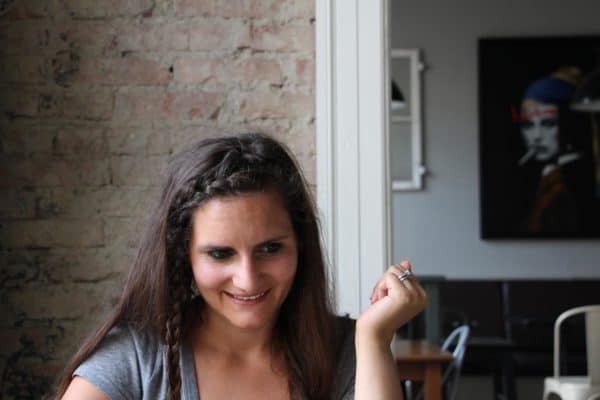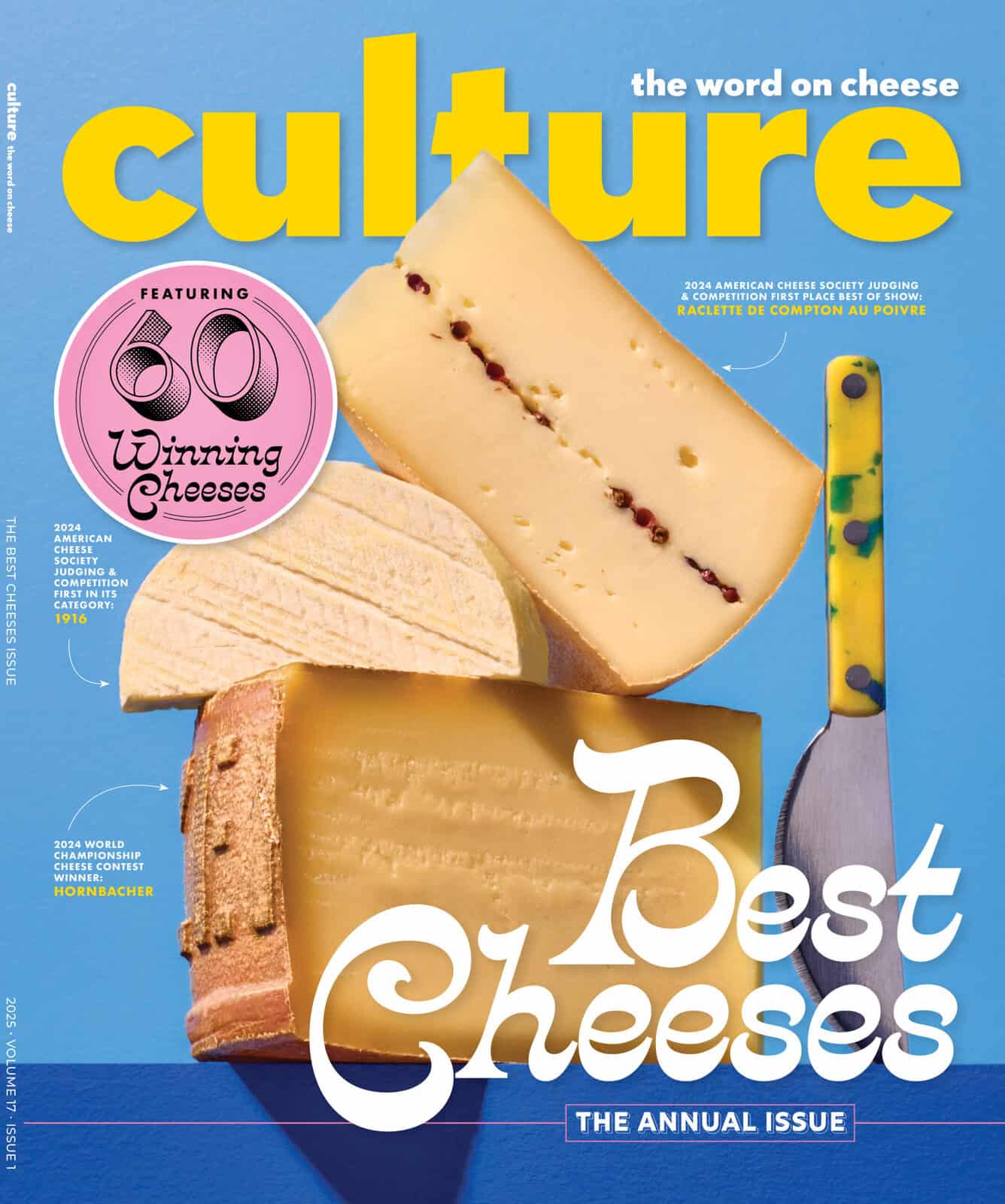As technology evolves and the climate changes, could this French blue cheese provide invaluable insight into the world of genetic degradation?
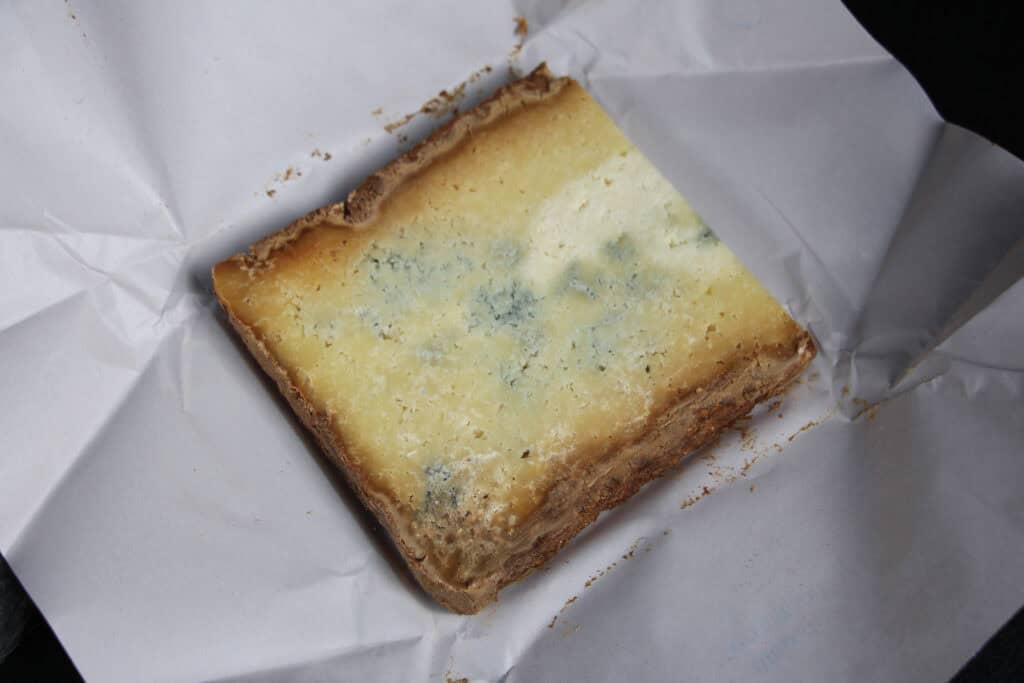
Bleu de Termignon’s rugged blue-gray rind is marred with patches of rusty red and snowy white, inherently evoking the flower-filled pastures of the Alpine Parc National de la Vanoise, where it’s made. Just five dairy farmers spend their summers in this remote national park—France’s first—transforming the milk from their Tarentaise and Abondance cattle into one of the world’s only natural blue cheeses. Unlike Gorgonzola, Stilton, or Roquefort, crumbly Bleu de Termignon is never inoculated with Penicillium roqueforti. Instead, it develops its subtle blue veins from spores naturally present in the centuries-old chalets perched high in the mountains, where neither car nor cell service can reach.
Catherine Richard begins her 18-hour workday at 3 a.m., stoking the woodstove before salting and turning yesterday’s cheeses. After milking her 17 cows, she combines the morning milk with that from the night before. She cuts and grinds the resulting curds by hand, a technique she says facilitates the air circulation that’s essential for the blue veins to form. The cheeses drain for several days in ancestral wooden molds, followed by a transfer to the centuries-old cellar, where, her partner Jean-Jacques recounts, Charlemagne once visited with a cardinal. “Charlemagne cut out all the blue because he was afraid of being poisoned,” he says. “The cardinal told him, ‘But my lord, you’re removing the best part!’”
In winter, Bleu de Termignon producers sell their milk to the Coopérative Laitière du Beaufortain (Beaufort Dairy Cooperative), whose AOP certification requires the makers to produce the cows’ winter feed. As a result, Richard and her partner split their time: she in the chalet, he commuting back and forth to the valley to grow their hay. Nevertheless, he says, “I start later. Catherine gets up too early. She gets up at 3, I get up at 4:30 or 5 a.m.”
“5 a.m. on the dot!” Richard crows with a laugh. “We’ve got a calendar here—no Saturday, no Sunday.”
The same is true of Frédéric Muller, who learned the trade from his grandmother and became a cheesemaker here in 2004. Muller must manage both cheese and hay on his own, making constant trips to the valley. His mid-morning cocoa is the only thing he’ll have until 10 p.m., when he may heat some store-bought soup on the woodstove and eat a slice of his own cheese before crawling into bed. “Between spring and fall, I lose 5 or 6 kilos [10 or 13 pounds],” he says. “You melt like snow in the sun.”
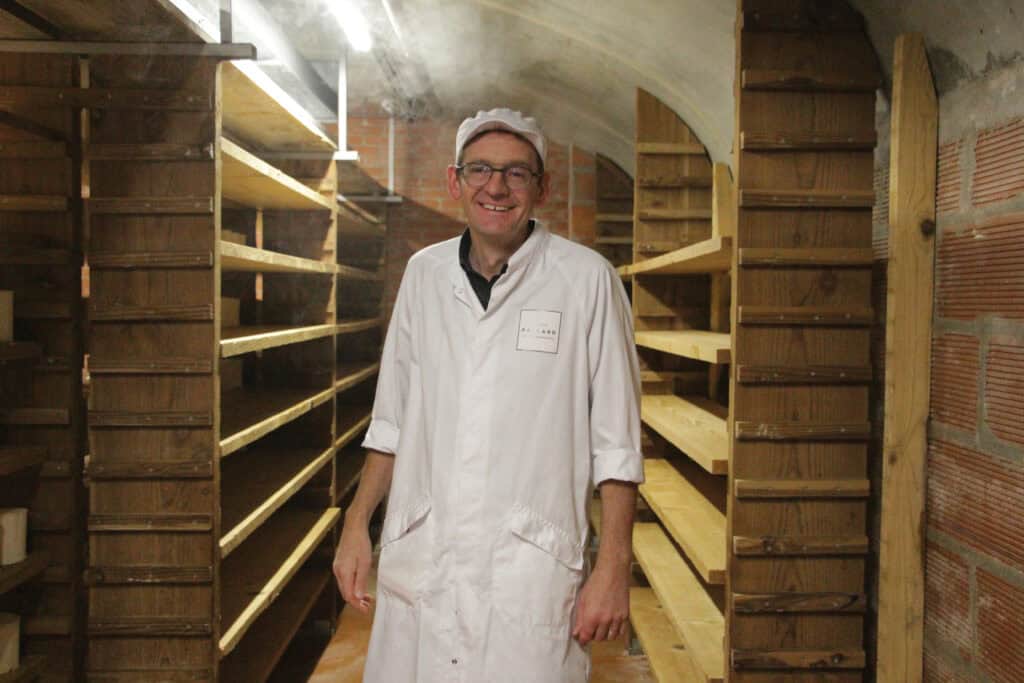
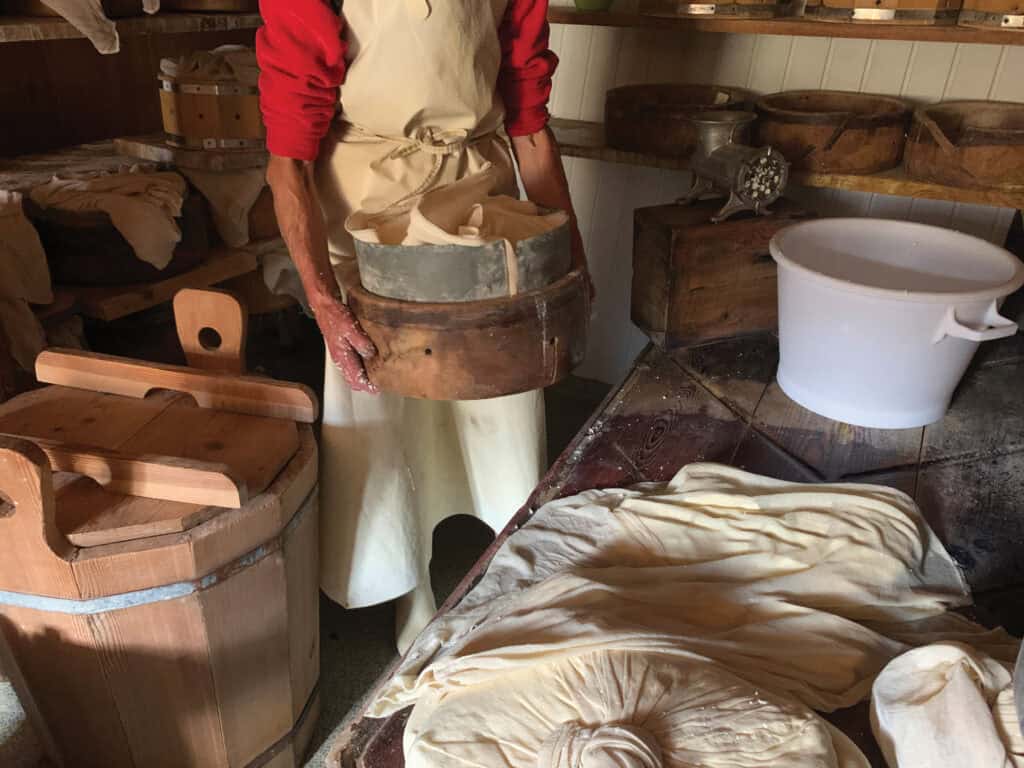
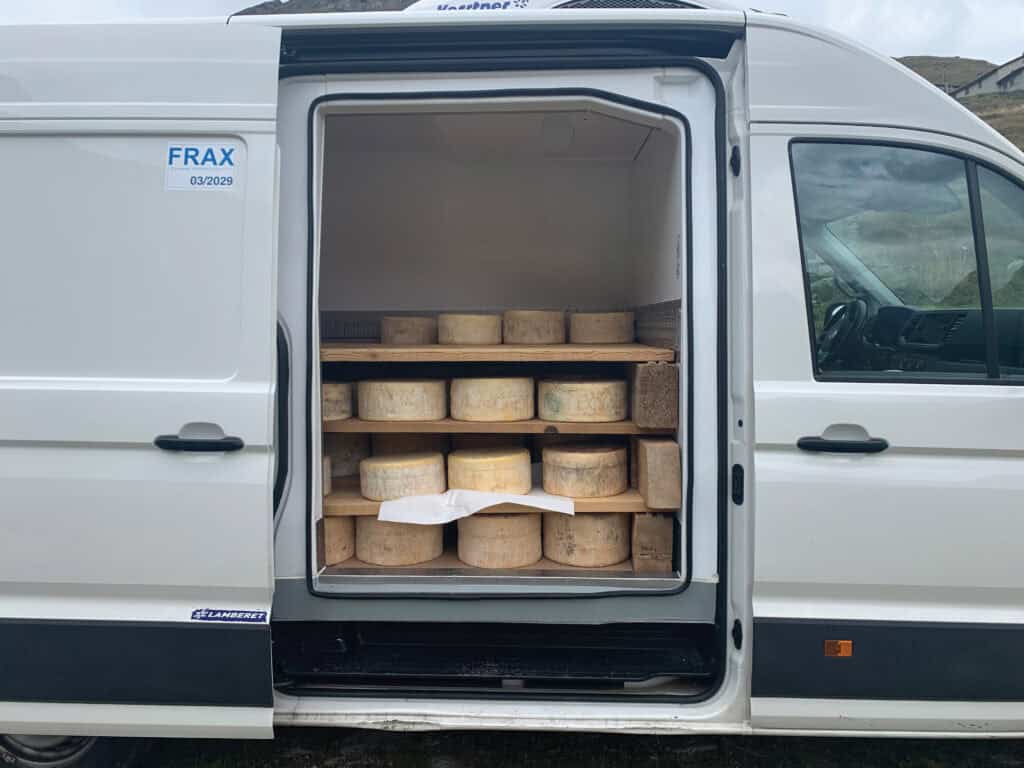
An Ancestral, All-Natural Blue Cheese
When it’s young, Bleu de Termignon resembles snow, according to expert affineur Jean-François Paccard; slice one open to reveal a paste that is reminiscent of Cantal: creamy, crumbly, and white. It’s up to Paccard, who drives roughly 90 miles from his aging cellar in Manigod to fetch his allotment each September, to coax the blue veins into forming along the craggy curds’ natural fault lines. He halves or quarters the wheels to encourage oxidation to work its magic, though he says the task is easier with some cheeses than others—and occasionally, it never transpires at all. “Sometimes mine don’t go blue,” Muller says. “They’re still good, you know? But they don’t go blue.”
This innate variability was once a hallmark of all blue cheese, according to Jeanne Ropars, a researcher at the Centre National de la Recherche Scientifique (National Center for Scientific Research). But in the nineteenth century, she says, cheesemakers realized that inoculation would “guarantee the blue.” While this discovery paved the way for the now-familiar generosity of blue veins in cheeses aptly described in French as “parsleyed,” a reliance on lab-grown spores decimated the genetic diversity of the P. roqueforti that gives these cheeses their characteristic color and flavor. Today, just two populations of the fungus are used in cheesemaking around the world: one for Roquefort, the other for every other blue. The result is a troubling loss of terroir.
“Gorgonzola, for example, is as old as Roquefort,” says Ropars, “But the problem with Gorgonzola is that they didn’t maintain the local biodiversity. They were invaded by industrial producers, and it seems they kind of lost what they had.”
The P. roqueforti in the Parc National de la Vanoise is different. It flourishes naturally in centuries-old chalets, contributing to “huge genetic diversity,” according to Ropars, who recently co-authored a study sequencing the fungi’s genome. “It’s in nature—it can recombine.”
The discovery bodes well for the world of blue cheese, “in particular as it pertains to the flavors,” Ropars says. After all, P. roqueforti isn’t just a pretty face. It affects everything, from the inhibition of other fungi or contaminants to the conversion of sugars like maltose and lactose, all of which can impact the color and aroma of the resulting cheese. By crossing strains from different populations, she says, we can “create” new strains with new phenotypes that might be of interest to cheesemakers looking to resurface some of that lost diversity.
“In preserving the biodiversity,” Ropars says, “you’re ensuring, at the end of the day, a diversity in flavors—and the survival of our cheeses.”
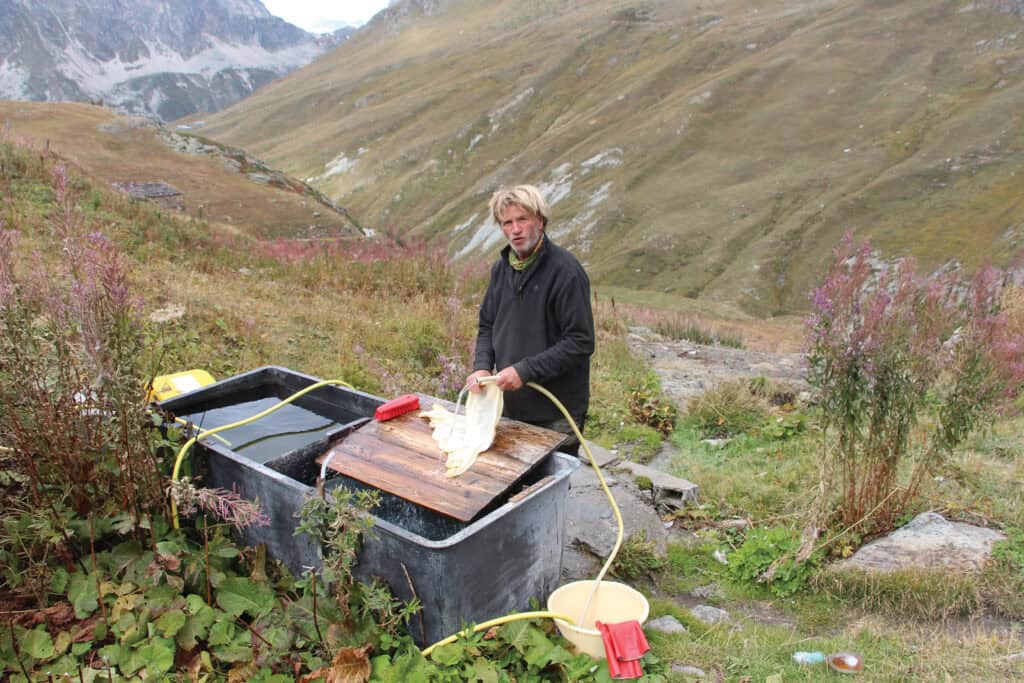
An Endangered Bounty
But in the Parc National de la Vanoise, the future isn’t quite as bright as it seems in a lab. The effects of climate change are palpable, with a cold, rainy summer forcing Richard to become “the queen
of the chainsaw” to keep the chalet warm enough for the cheeses to drain. Muller contends that last September, the vegetation looked more typical of October. As a result, he says, “In one week, we lost at least 50 liters [13 gallons] of milk.”
Climate change isn’t the only threat to their livelihoods. Bureaucratic transitions to digital invoices are difficult for cheesemakers who rely on satellite phones as their only connection to the outside world, and pushes to eradicate traditional wooden molds and aging boards in favor of plastic and stainless steel could diminish the presence of the coveted natural flora. Consumer expectations have changed, too, says Muller; some are skeptical of raw milk’s safety, others are wary of the innate variability of the cheese. “People ask for the fat content,” Muller says. “I told them to go to [the supermarket]. It’s written on the packet there.”
But perhaps the biggest threat to the future of France’s rarest cheese is the dwindling workforce. With seven producers just a few years ago, the official number has now fallen to five— and last year, the fifth cheesemaker, Bernard Richard, wasn’t able to manage both hay growing and cheesemaking; as a result, he made no blue at all.
Sixty-five-year-old Catherine Richard says the short nights and backbreaking work are beginning to take a toll. “There are days when I’m at work and I say to myself, ‘This isn’t possible. I’m going
to fall asleep on the tractor.’” She’d welcome even one day off a week, but she says hired help is often unreliable or unsatisfactory. Richard has no children, but even if she did, there’s no guarantee they’d be willing to pick up the reins.
Muller feels similarly. “Who would want to do a job where you need to get up every day, 365 days a year? Where there’s no vacation,” he muses. “Who’d want to get themselves into a thing like that?”
For now, they continue. But if something doesn’t change, this newfound biodiversity may be lost forever. “I’ve spent every summer of my life here,” says Catherine. “But I’m not sure how much longer I’ll last.”


